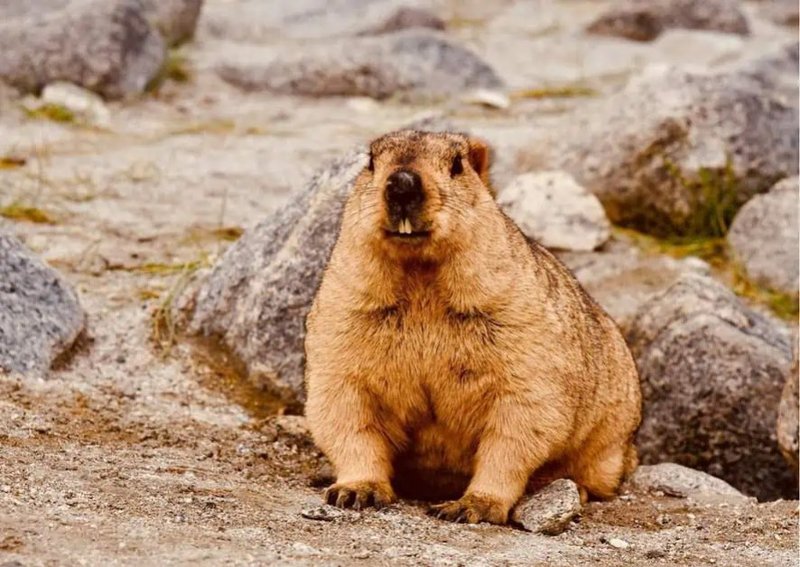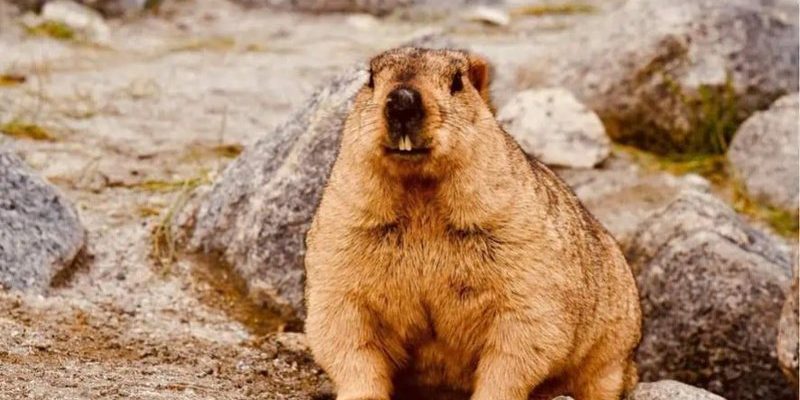
Think of a marmot like a small dog – friendly, social, and alert. They have their own personalities, exhibit intriguing behaviors, and might just surprise you with their smarts. Let’s break down what makes these furry animals tick, how they solve problems, and even how they interact with each other. By the end of this exploration, you’ll have a much clearer picture of just how smart these little guys can be.
Marmots: The Basics of Their Intelligence
To truly appreciate the cognitive abilities of marmots, we need to start with a little background. Marmots belong to the rodent family and are primarily found in mountainous regions of North America and parts of Europe. You might think of them as the “groundhog cousins.” What sets them apart is their social behavior and complex family structures.
Marmots live in colonies, often consisting of several family units. They rely on each other for protection against predators and to raise their young. This reliance on social connections often drives their intelligence—from communication methods to problem-solving skills. If you think about it, they navigate the challenges of their environment not just for themselves, but for their entire community, much like we do in our human societies.
Communication: Talking the Marmot Talk
Marmots have a rich way of communicating with each other that showcases their cognitive abilities. They use a variety of vocalizations to convey messages. You might hear them chirp, whistle, or even grunt, each sound serving a specific purpose. For instance, a sharp call can alert others to nearby danger, while softer sounds can be used in social interactions.
These vocalizations aren’t just random noises; they show a level of social intelligence. Marmots can differentiate between sounds and understand the urgency behind them. If a predator approaches, you can bet the marmot on guard is going to communicate immediately, helping to keep the colony safe. This ability to convey complex information using sound reflects their cognitive depth.
Problem-Solving Skills: Marmots in Action
When it comes to problem-solving, marmots exhibit a surprising level of resourcefulness. For example, if a marmot comes across an obstacle, like a fallen tree branch or a rocky area, it doesn’t just give up. Instead, it will assess the situation, figure out a way around or over the obstacle, and continue on its way.
Researchers have observed marmots in the wild using tools like stones to dig or to create paths. They’re not just mindlessly scratching the surface; these little critters demonstrate planning and foresight. Imagine them thinking, “If I move this rock, I can get to that tasty patch of grass over there.” It showcases a type of intelligence that’s both practical and adaptable.
Social Structure: Learning from Each Other
Social intelligence is another facet of a marmot’s cognitive abilities. Living in colonies means they learn from one another. Younger marmots often watch older ones to gather information on foraging, escaping predators, and even social interactions. This kind of learning is crucial for their survival and shows that they can pass knowledge down through generations.
Think about how kids learn by watching their parents or older siblings. Marmots do something similar! This social learning helps them adjust to new environments and deal with challenges more effectively. It’s about more than just instinct; it’s about understanding and adapting, which is a significant indicator of intelligence.
Memory: The Marmot Mind
A marmot’s memory also plays a crucial role in their survival. These animals must remember the locations of food sources, burrow entrances, and potential threats. Their ability to recall specific locations in their environment helps them navigate their habitat efficiently.
For example, during the summer months, when food is abundant, marmots need to remember where they’ve found the best foraging spots. It’s like having a mental map of their territory. Studies show that marmots can retain this information for long periods, which is essential in the wild where food may be scarce in the colder months.
Playing and Exploration: A Sign of Intelligence?
Another interesting aspect to consider is how marmots play. Yes, that’s right! Marmots engage in playfulness, especially when they are young. They roll around, chase each other, and even engage in mock fighting. While this may seem like just fun and games, play is actually an important part of learning.
Through play, young marmots develop their physical and social skills. They learn to navigate their environment, understand limits, and build social bonds with fellow colony members. This exploratory behavior also helps them adapt to new challenges, showcasing their growing intelligence as they mature.
So, how smart is a marmot? From their communication skills and problem-solving abilities to their social dynamics and memory, these little creatures display a range of cognitive abilities that highlight their intelligence. While they might not solve complex math problems or build elaborate structures, marmots are adept at navigating their world, understanding their social bonds, and utilizing their environment in clever ways.
Next time you see a marmot lounging in the sun or darting across the grass, take a moment to appreciate their smarts. They might just be a little fluff ball, but they’re also a remarkable example of how intelligence manifests in the animal kingdom. Whether it’s through their playful antics or their clever communication, marmots remind us that being smart doesn’t always look the same across species.

